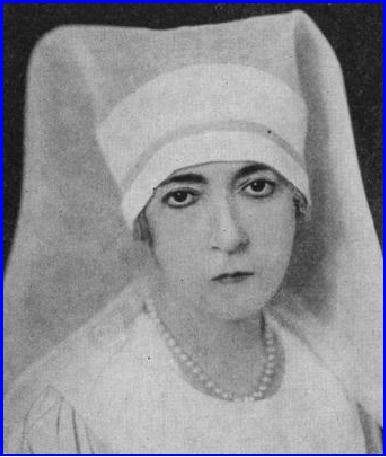 |
NATIONALITY IN COSTUME |
| << IDIOSYNCRASIES IN COSTUME |
| MODELS >> |

age
when elemental passions were
"good form," jealous husbands
are blamed for
these!
In
the seventeenth century the
idle dancing youth of to-day
had his prototype in
the
Cavalier
Servente, who hovered at his
lady's side, affecting
extravagant and
effeminate
manners.
The
corrupt morals of the
sixteenth century followed in
the wake of social
intercourse
by travel, literature, art
and styles for
costumes.
Mme.
R�camier, the exquisite
embodiment of the Directoire
style as depicted by
David
in his famous portrait of
her, scandalised London by appearing in
public,
clad
in transparent Greek draperies and
scarfs. Later Mme. Jerome
Bonaparte, a
Baltimore
belle, quite upset Philadelphia by
repeating Mme. R�camier's
experiment
in
that city of brotherly love!
We are also told on good authority
that one could
have
held Madame's wedding gown in
the palm of the
hand.
Victorian
hoops for public conveyances, paper-soled
slippers in snow-drifts,
wigs
immense
and heavy with powder,
hair-oil and furbelows, hour-glass
waist lines
producing
the "vapours" fortunately
are no more.
Taken
by and large, we of the year
1917 seem to have reached
the point where
woman's
psychology demands of dress
fitness for each occasion,
that she may
give
herself
to her task without a material
handicap. May the good work
in this direction
continue,
as the panorama of costumes for women
moves on down the ages
that are
to
come.
CHAPTER
XXVI
NATIONALITY
IN COSTUME
HEN
seen in
perspective, the costumes of various
periods, as well as the
architecture,
interior decoration and furnishings of
the homes of men
appear
as distinct types, though to
the man or woman of any
particular
period
the variations of the type
are bewildering and misleading. It is
the
same
in physical types; when
visiting for the first
time a foreign land one
is
immediately
struck by a national cast of
feature, English, French,
American,
Russian,
etc. But if we remain in the
country for any length of
time, the differences
between
individuals impress us and we lose track
of those features and
characteristics
the nation possesses in
common. To-day, if asked
what outline,
materials
and colour schemes characterise our
fashions, some would say
that almost
anything
in the way of line,
materials and colour were
worn. There is,
however,
always
an epoch type, and while more
than ever before the
law of appropriateness
has
dictated a certain silhouette
for each occasion,--each
occupation,--when
recorded
in costume books of the future we will be
recognised as a distinct phase;
as
distinct as the Gothic,
Elizabethan, Empire or Victorian
period.

PLATE
XXXI
Costume
of a Red Cross Nurse, worn
while
working
in a French war hospital, by
Miss
Elsie
de Wolfe, of New York. An
example of
woman
costumed so as to be most
efficient
for
the work in hand.
Miss
de Wolfe's name has
become
synonymous
with interior
decoration,
throughout
the length and breadth of
our land,
but
she established a reputation as one of
the
best-dressed
women in America, long
before
she
left the stage to
professionally decorate
homes.
She has done an
immeasurable
amount
toward moulding the good
taste of
America
in several fields. At present
her
energies
are in part devoted to
disseminating
information
concerning a cure for burns,
one
of
the many discoveries resulting
from the
exigencies
of the present devastating
war.
Miss
Elsie de Wolfe in Costume of Red
Cross
Nurse
As
we have said, in studying
the history of woman
decorative, one finds two
widely
separated
aspects of the subject,
which must be considered in turn.
There is the
classifying
of woman's apparel which comes
under the head of European
dress,
woman's
costume affected by cosmopolitan
influences; costumes worn by that
part
of
humanity which is in close
intercommunication and reflecting
the ebb and
flow
of
currents--political, geographical and
artistic. Then we have quite
another field
for
study, that of national costumes, by
which we mean costumes peculiar to
some
one
nation and worn by its men
and women century after
century.
It
is interesting as well as depressing
for the student of national
characteristics to
see
the picturesque distinguishing
lines and colours gradually
disappear as
railroads,
steamboats and electric trolleys
penetrate remote districts. With
any
influx
of curious strangers there comes in
time, often all too
quickly, a regrettable
self-consciousness,
which is followed at first by an
awkward imitation of
the
cosmopolitan
garb.
We
recall our experience in
Hungary. Having been advised to
visit the peasant
villages
and farms lying out on the
p�stas (plains of southern
Hungary) if we would
see
the veritable national costumes, we
set out hopefully with
letters of introduction
from
a minister of education in Buda
Pest, directed to mayors of
Magyar villages.
One
of these planned a visit to a
local celebrity, a Magyar
farmer, very old,
very
prosperous,
rich in herds of horses, sheep and
magnificent Hungarian oxen,
large,
white
and with almost straight, spreading
horns, like the oxen of
the ancient
Greeks.
There we met a man of the
old school, nearly eighty,
who had never in his
life
slept under cover, his
duty being to guard his
flocks and herds by night as
well
as
day, though he had amassed
what was for his station in
life, a great fortune. He
had
never been seen in anything
but the national costume,
the same as worn in
his
part
of the world for several
hundred years. And so we
went to see him in his
home.
We
were all expectation! You can
imagine our disappointment,
when, upon arrival,
we
found our host awaiting
us, painfully attired in the
ordinary dark cloth coat
and
trousers
of the modern farmer the
world over. He had donned
the ugly things in
our
honour,
taking an hour to make his
toilet, as we were secretly
informed by one of
the
household. We tell this to
show how one must persevere
in the pursuit of
artistic
data.
This was the same occasion
cited in The
Art of Interior Decoration,
when
the
highly
decorative peasant tableware was banished
by the women in the house,
to
make
room, again in our honour,
for plain white ironstone
china.
The
feeling for line accredited to
the French woman is equally
the birthright of the
Magyar--woman
and man. One sees it in the
dash of the court beauty
who can
carry
off a mass of jewels,
barbaric in splendour, where
the average European
or
American
would feel a Christmas tree in
the same. And no man in
Europe wears his
uniform
as the Hungarian officer of
hussars does; the
astrachan-trimmed short coat,
slung
over one shoulder, cap
trimmed with fur, on the
side of his head, and
skin-
tight
trousers inside of faultless,
spurred boots reaching to the
knees. One can go so
far
as to say there is something decorative
in the very temperament of
Hungarian
women,
a fiery abandon, which makes
line
in
a subtle way quite apart
from the line
of
costume. This quality is also
possessed by the Spanish woman, and
developed to
a
remarkable degree in the
professional Spanish dancer. The
Gipsy woman has it
too,--she
brought it with her from
Asia, as the Magyar's forebears
did.
Speaking
of the Magyar, nothing so
perfectly expresses the
national temperament
as
the czardas--that peasant
dance which begins with
calm, stately repression, and
ends
in a mad ecstasy of expression, the
rapid crescendo, the whirl,
ending when
the
man seizes his partner and
flings her high in the
air. Watch the flash of
the eyes
and
see that this is genuine
temperament, not acting, but
something inherent in
the
Table of Contents:
- A FEW HINTS FOR THE NOVICE WHO WOULD PLAN HER COSTUMES
- THE LAWS UNDERLYING ALL COSTUMING OF WOMAN
- HOW TO DRESS YOUR TYPE
- THE PSYCHOLOGY OF CLOTHES
- ESTABLISH HABITS OF CARRIAGE WHICH CREATE GOOD LINE
- COLOUR IN WOMAN'S COSTUME
- FOOTWEAR
- JEWELRY AS DECORATION
- WOMAN DECORATIVE IN HER BOUDOIR
- WOMAN DECORATIVE IN HER SUN-ROOM
- I. WOMAN DECORATIVE IN HER GARDEN:WOMAN DECORATIVE ON THE LAWN
- WOMAN AS DECORATION WHEN SKATING
- WOMAN DECORATIVE IN HER MOTOR CAR
- HOW TO GO ABOUT PLANNING A PERIOD COSTUME
- I. THE STORY OF PERIOD COSTUMES:II. EGYPT AND ASSYRIA
- DEVELOPMENT OF GOTHIC COSTUME
- THE RENAISSANCE
- EIGHTEENTH CENTURY
- WOMAN IN THE VICTORIAN PERIOD
- SEX IN COSTUMING
- LINE AND COLOUR OF COSTUMES IN HUNGARY
- STUDYING LINE AND COLOUR IN RUSSIA
- MARK TWAIN'S LOVE OF COLOUR IN ALL COSTUMING
- THE ARTIST AND HIS COSTUME
- IDIOSYNCRASIES IN COSTUME
- NATIONALITY IN COSTUME
- MODELS
- WOMAN COSTUMED FOR HER WAR JOB
- IN CONCLUSION